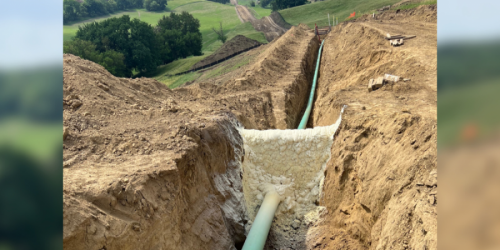Q&A Forums
Best areas to insulate with spray foam? Post New Topic | Post Reply
| Author | Comments |
|---|---|
|
swfoam
Posted: Jul 30, 2012 01:39 PM
|
Best areas to insulate with spray foam?
So I run into clients all the time that don't have enough money to use spray foam on the whole home, so if you can only choose 2 areas to insulate in a home out of the roof, the walls, or the crawlspace/floor. Which would you choose to make the home the most energy efficient possible, roof and crawlspace/floor, or roof and walls? And why do you choose what you choose? Sound off guys (and gals)!! |
|
Mike Meades
Posted: Jul 30, 2012 04:37 PM
|
In my few years of experience with homes I've noticed the best results are gained with doing the roof deck and crawl spaces. Most of our work is in existing homes which are limited to wall access anyway. Visiting with clients afterwards the differences made by doing these two areas were great. |
|
swfoam
Posted: Jul 30, 2012 10:56 PM
|
I agree, I try to push clients that way, but you know how customers can be, they think they know everything because they read something on the internet... |
|
John Shockney
Posted: Aug 03, 2012 07:04 AM
|
For me it depends on the building design and where the HVAC system is installed. Of course in existing homes the floor has been left out of the insulation package with the thought being that heat rises and by insulating the walls and ceiling you would trap the heat in. But heat doesn’t rise, hot air rises, heat radiates out in all directions, so insulating a cold crawl space, basement, or floor can make a large difference, and foam is the best choice here. As for spraying the roof (and I do like this system) it depends on the design and how much the customer can spend, with flat ceilings and no HVAC in the attic it is hard for me to tell a customer that they need to spend $3 per square foot to get the same insulation performance that can be blown in for less than $1 per square foot. Due to the complex design of most roofs and ceilings today and the HVAC systems installed in them the only way to get a good building envelope is to spray the roof deck. This is also the largest exposed surface and provides the largest heat loss heat gain to the building. Also the non-vented roof/attic system increases the structural strength by reducing the wind lift factor, keeps out insects and wind driven water or snow. And by far it is the best way to go but the biggest mistake that I have seen is when R-40+ of blown in insulation is replaced with R-20 of foam and then it is expected to work twice as well as the old blown in insulation, yea maybe it works as good as the blown in that was removed but the customer won’t see any savings. If it comes down to the wire on the budget on new construction less critical walls like those between the house and garage or less exposed walls depending on the site can be done with fiberglass (now I said the ‘f’ word and need to wash out my mouth with soap) . Or using foam just in those hard to insulate sections around pipes or wires. Bottom line it would be best if everyone could use closed cell foam everywhere but every house is a compromise between energy savings, livability, and budget. Use the best product in the right locations for the best overall savings! Airpro |
|
Mark Mouton
Posted: Aug 05, 2012 09:41 AM
|
If you are talking new construction, single story, I always recomend using sprayfoam in the walls. It will probably be the last time the walls will be open and an airtight wall is good. You can fill the T's and other places (where you didn't think it would leak) with foam where you can't do as good with anything else. If the roofline is 8/12 or less, sprayfoam is probably best because you seal again and if air- conditioning equipment is there, you have captured any duct leakage and reduced heat load on equipment. If you seal the attic and have gas heat, the furnace will have to have combustion air, so a 90% furnace is in order because it gets its combustion air at the roofline. I try to always notice if there is a lot of gas appliances in a house. A story and a half house,where the upstairs is built into the attic, no question, foam the roofline. Existing homes you have to look at and try to figure where the problem areas are. (Always look at gas furnaces.) Don't bottle one up in an attic with no combustion air. I have done drill-n-fill jobs using cellulose and people told me it changed their house, so their walls were a problem. I also have a rig using non-expanding foam and it works good. Others said the attic insulation fixed it. I sprayfoamed a man's roofline in his home and he was so impressed with what it did, he had us do his store (which we just finished.) He said it changed the store. His problem was dropped ceilings. I do blown cellulose and fiberglas also, and have used these products way longer than foam. I think foam is the best insulation, but sometimes it isn't feasable for everyone. I hope I haven't offended in talking like you are a rookie because I don't know you. I'm just sittin here thinkin and typing. |





























